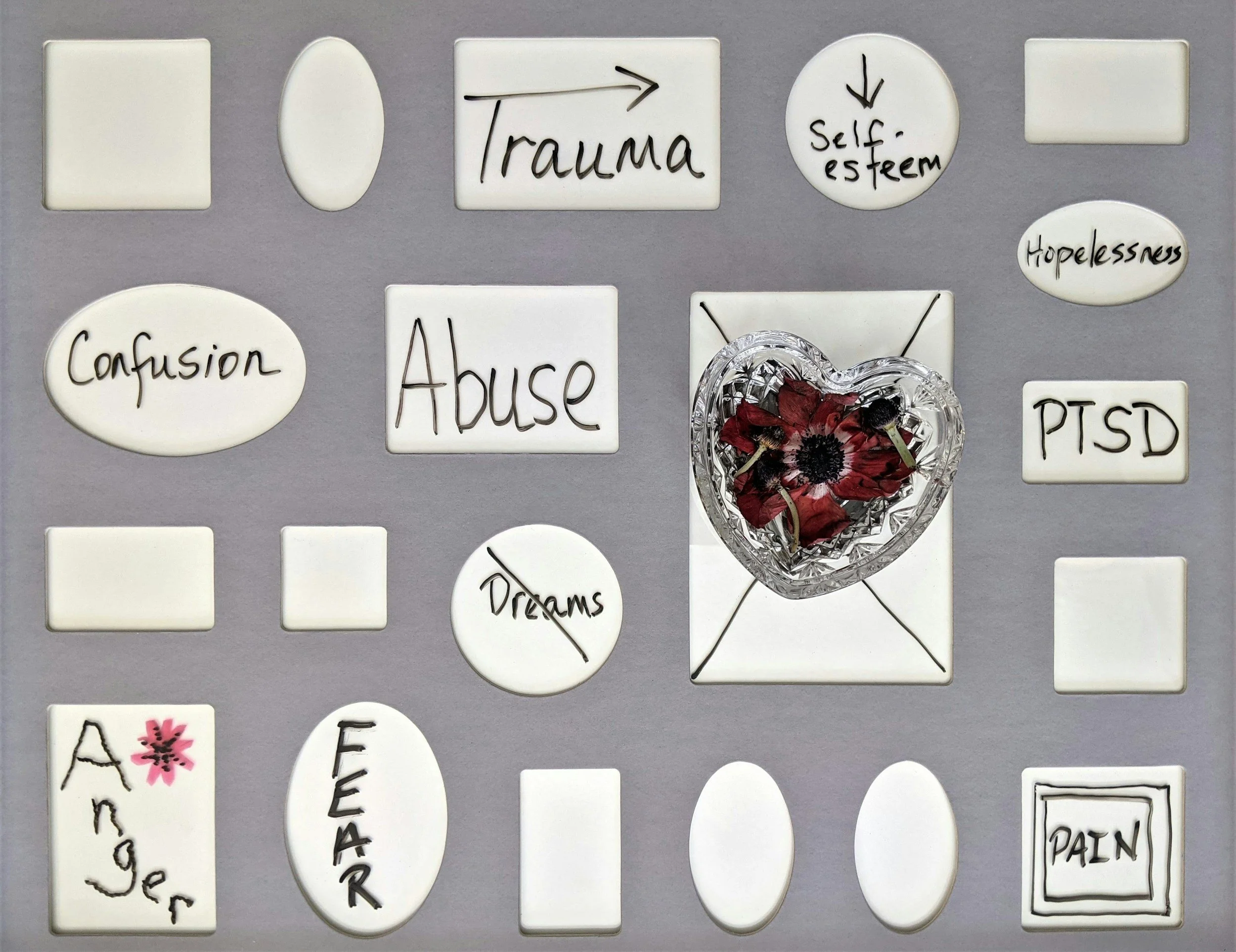PHYSICAL WELLNESS
TRAUMA +
THE NERVOUS SYSTEM
Trauma is something our nervous system remembers. Whether the event was big or small, acute or ongoing, our bodies often carry the imprint long after the mind has moved on.
The nervous system’s job is to protect us. It does this by activating survival responses like:
Fight (mobilize)
Flight (escape)
Freeze (shut down)
Fawn (appease)
When the body doesn’t feel safe to complete these responses, trauma can become “stuck” in the system. You might feel like you’re always bracing for something. Or maybe you shut down during stress, even when you don’t want to. You’re not broken — your body has just been protecting you the best way it knows how.
Common Signs You May Be Experiencing This
Trauma-related nervous system dysregulation can look like:
Feeling “on edge” or hyper-aware of your environment
Emotional flooding or shutting down
Trouble sleeping or relaxing, even when you're tired
Digestive issues, chronic pain, or autoimmune flares
Panic, dissociation, or difficulty remembering parts of your past
People-pleasing, overexplaining, or feeling responsible for others' emotions
Feeling numb or disconnected from your body
These are not signs of weakness. They’re survival strategies your body learned for a reason.
⚠️ What Causes Vagus Nerve Dysregulation?
Vagal dysregulation can be caused or worsened by:
Chronic stress or trauma (especially if unresolved)
Physical injury to the neck, brainstem, or spine
Toxic exposure (like mold, chemicals, or heavy metals)
Gut inflammation or imbalance
Long-term illness or immune issues
Nervous system overload — too many demands with too little recovery
Lack of safety (emotional, physical, or environmental)
Sometimes the body gets stuck in fight, flight, or freeze — and can’t find its way back.
Soothing, Supportive Tools
🌱 Everyday Support
These gentle practices can be woven into your day, often without needing any special equipment:
Routine and rhythm: predictable routines can help create a sense of safety
Body-based grounding: touching your own arms, tapping your legs, or laying flat on the floor
Creative expression: art, music, or movement can help release what words can’t
Eye-gazing with a safe person or mirror: a powerful way to bring presence and self-compassion back online
Vocalizing: humming, chanting, or toning can regulate the vagus nerve and release tension
🥣 Nourishment
Support your nervous system from the inside out with gentle nutrition:
Soothing, warm meals: easy on the digestion and calming to the system
Slow, mindful eating: helps retrain safety into the gut-brain axis
Blood sugar balance: steady glucose can prevent emotional spirals
Herbal supports: teas like tulsi, lemon balm, or chamomile may gently calm without sedation
Adaptogens (if tolerated): holy basil, ashwagandha, or reishi may support stress resilience
🧘 Therapeutic Practices
These are more structured options that may be helpful with deeper dysregulation:
Somatic Experiencing (SE) or Sensorimotor Psychotherapy: work with the body’s memory of trauma
EMDR (Eye Movement Desensitization and Reprocessing): uses bilateral stimulation to process stuck trauma
Polyvagal-Informed Therapy: brings in nervous system awareness for healing
Tension & Trauma Releasing Exercises (TRE): uses gentle tremoring to discharge stress
Inner child or parts work: supports emotional integration and repair
🌸 Sensory Tools & Daily Comforts
Support your system by gently soothing your senses:
Weighted blankets or body socks: help contain the body and provide proprioceptive input
Safe scents: essential oils associated with safety, memory, or comfort (lavender, cedarwood, orange)
Calm lighting: soft, natural light or warm-toned bulbs
Sound therapy: gentle music, binaural beats, or nature sounds that evoke safety
Textured grounding objects: items to hold, stroke, or carry that bring you back to the present
Safety doesn’t have to be big. It just has to be real — and repeated.
How It Connects to the Bigger Picture
Trauma can ripple through every part of the body — especially when left unrecognized or unsupported. Some key links include:
The Vagus Nerve: a key player in trauma recovery and vagal tone
The Gut-Brain Axis: trauma can deeply affect digestion and immunity
Chronic Illness: trauma and long-term stress often overlap with conditions like MCAS, chronic fatigue, and autoimmune patterns
The Inner Child & Emotional Memory: trauma shapes how we relate to ourselves and others
Sensory Sensitivity: heightened or dulled responses to light, sound, texture, or social interaction
Further Exploration
🔗 [What is Polyvagal Theory?]
🔗 [How to Reconnect with Your Body After Trauma]
🔗 [Nervous System Regulation Toolkit]
🔗 [Free Calming Audio Practices]
🔗 [Quiz: What’s Your De-Stress Type?]
📖 Blog: “I Didn't Know It Was Trauma”


